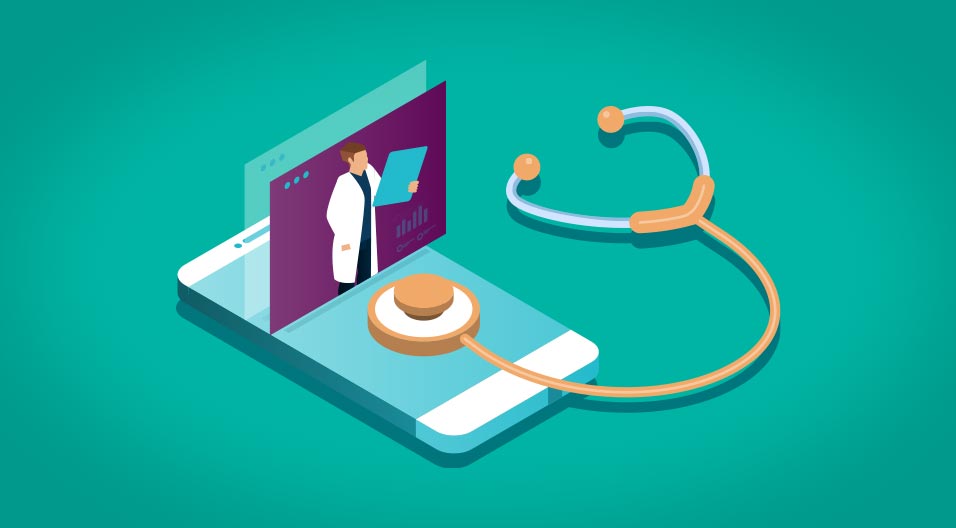Nationally, clinical staff continue to struggle across the care continuum to best support patients and sustain their own wellbeing. Manual tasks are eating up their time and taking them away from the meaningful work of attending to patients.
In fact, for each hour of clinical face time that care teams are spending with patients, an additional two are consumed by administrative work. Comparably, a recent study found that less than one third of RNs time was spent with patients. None of this bodes well for staff engagement and positive patient experience.
To make matters worse, staff well-being is suffering. Care teams have as much work and less support, creating an unsustainable environment and driving them out of the profession. The effects of a poor workflow process are staggering: in the past five years, the average hospital turned over 95.7% of their RN workforce. Indeed, travel nursing revenue tripled in the last several years and the cost to health systems is increasingly untenable if workflow management is not improved.
The difficulty in solving these problems arises from the current, disjointed workflows created by technologies that are intended to reduce tasks, but that actually create more work. Using multiple point solutions that don’t scale or integrate with EHRs puts more of a burden on healthcare staff to connect the dots across multiple sources of information and different technologies, a clear waste of time and resources. What’s missing is the integration across all steps of the patient journey, fostering connection with patients, and seamless interaction with hospitals’ EHRs.
The bottom line: there’s just too much to manage, too much to support and current approaches are not working. But there’s a better way.
How to make care teams’ lives easier
Providing healthcare staff with effective technological tools and creating automated workflows fosters a much more stable working environment. In turn, staff can perform at a higher level with greater workflow efficiency while positively impacting health systems’ bottom lines. This rings true for automated tasks that fall across the care continuum. Take the following three examples:
In implementing automated appointment reminders, Community Health Network not only saved staff time but was able to retain $3M+ in revenue and decrease their no-show rate by 1.2%. CipherHealth’s automated appointment reminders kept staff from having to send and respond to many inquiries manually and helped find patients who would have missed follow-up appointments.
Using digital tools for quality & safety rounding, 90% of staff members at UC Davis reported the audit tool was easy to use and 70% staff reported saving 1-2 hours. With CipherHealth’s customizable patient rounding technology, this health system could enhance patient care and reduce the need for repetitive tasks, while creating better workflows and data transparency for staff.
Nurse satisfaction at a leading comprehensive care network increased by 40% after automated post-discharge patient outreach was implemented. As with any employee, nurses want to work in a place that invests in tools that support them in doing their job. Implementing CipherHealth’s post-discharge followup means that you can offer your clinical staff a powerful triaging solution for the follow-up process, improving workflow efficiency and improving issue resolution for patients.
The takeaway: using technological tools intelligently lets staff literally do more with less across pre-care, point-of-care and post-care communications. With digital workflows, time wasting repetitive tasks are cut out, creating more time for personalized care to patients.
CipherHealth delivers the automation you need
With CipherHealth’s Patient Engagement Platform, providers can automate all of the below action steps along the patient journey, reducing repetitive, administrative work for staff. When a patient flags they have a question—regarding their appointment time, the data intake process, post-visit/post-discharge instructions or something else—only then are staff alerted to call them back.
Through automation in healthcare, care teams can gain time back because because they no longer have to:
- Send preventative appointment prompts and reminders or field scheduling inquires
- Confirm appointments or send reminders
- Share personalized pre-care or procedure prep instructions prior to each patients’ appointment
- Capture data from consent forms, screeners, medical history, insurance and other paperwork
- Notify patients of appointment delays and special entry instructions
- Execute patient rounds manually, capture their experience and prepare them for discharge
- Follow-up with patients post-visit or post-discharge manually to confirm discharge instructions and health status
From less paperwork to improved accuracy to reduced costs for hospitals, there are countless benefits to automating common tasks and managing workflow with CipherHealth. Whereas manual work and disconnected systems were the norm, now workflows are digital, connected and scalable. As a result, the burden on clinical staff is drastically reduced, and they can prioritize providing quality care for patients.
A step-by-step action plan towards staff workflow automation
Of course, moving from disconnected stop-gap solutions to one integrated workflow automation platform cannot happen overnight. Very few initially set out to buy a platform, especially not after having invested tens of millions of dollars on an EMR.
If the prospect of large-scale change seems fiscally unrealistic or overwhelming from an implementation standpoint, health systems should consider buying a set of capabilities that can be built out and expanded over time.
Across pre-care, point-of-care and post-care solutions, with CipherHealth, health systems have the option to start anywhere—to choose their own pathway and grow on their own timeline. What’s key is that our solutions integrate with EHRs, complimenting your existing environment.
Conclusion
Health systems today face many challenges that are forcing them to redesign their approaches to supporting their staff and engaging their patients. Automation makes it possible to achieve both. Through digital tools, hospitals can help their staff work more effectively while also providing consistent outreach and care to their patients. While the full care loop—from scheduling to patient rounding to post-visit communications—is a lot to tackle, the right technology makes it easier for overworked staff, fosters connection and creates long-term loyalty with patients.








